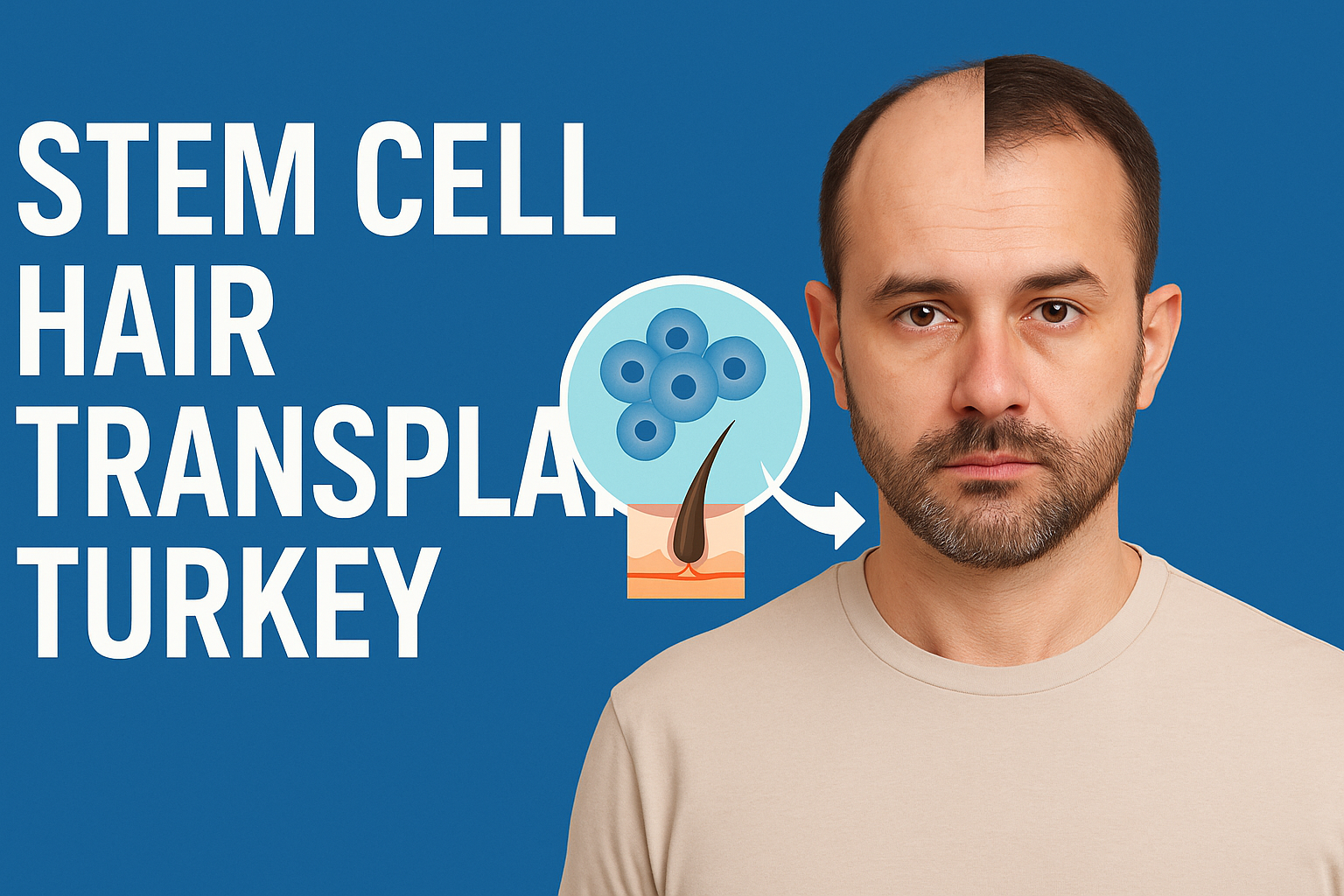
Stem Cell Hair Transplant Turkey: Stem cell hair treatment is an innovative approach to hair restoration that goes beyond traditional transplant methods. Instead of simply relocating hair follicles from the donor area to balding regions, this therapy harnesses the regenerative power of stem cells. These unique cells have the ability to transform into different types of tissues and play a critical role in repairing, healing, and regenerating damaged structures.
In hair transplantation, stem cell therapy aims to stimulate dormant follicles, improve graft survival, accelerate healing, and enhance the density of newly grown hair. Clinics in Turkey, especially in Istanbul and Antalya, are leading in applying this technology in combination with FUE or DHI hair transplants.
How Does Stem Cell Hair Treatment Work?
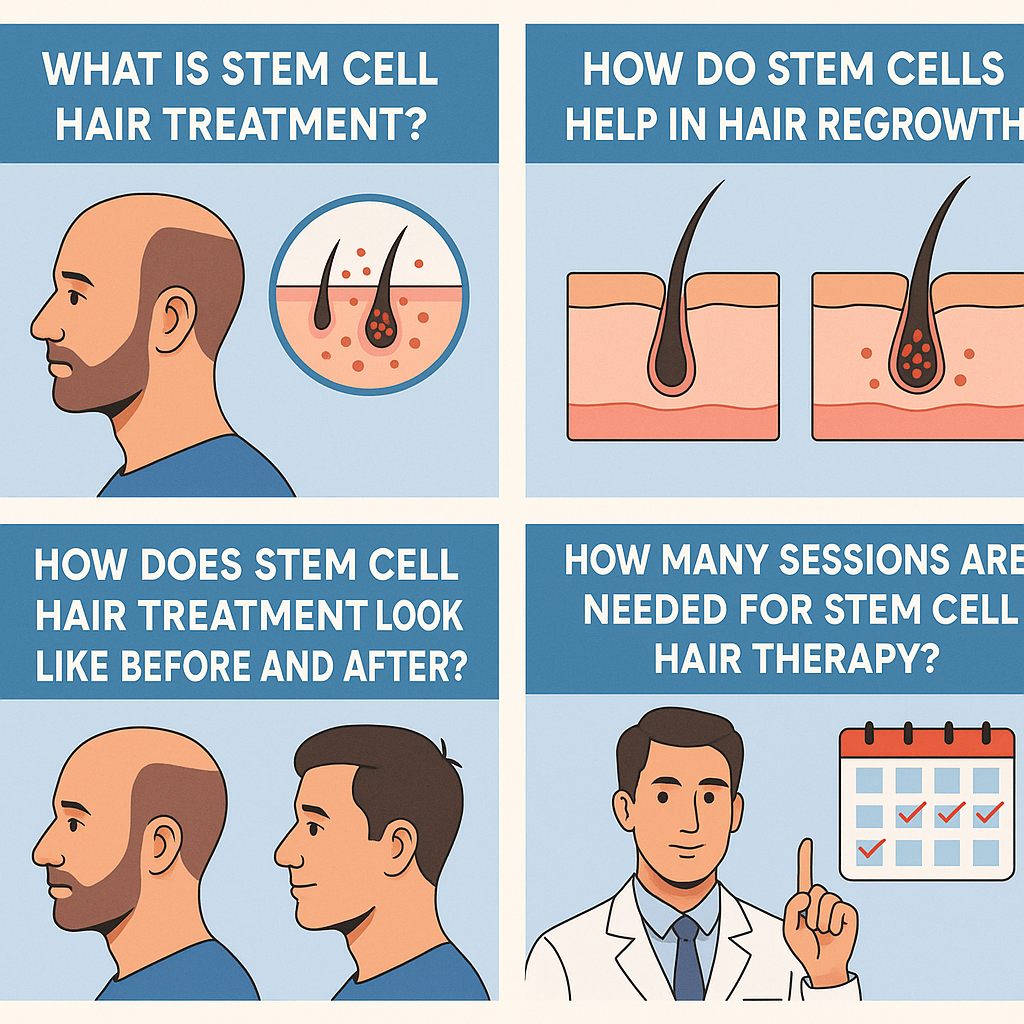
The procedure typically involves extracting a small amount of stem cell–rich tissue, often from the patient’s fat (adipose) tissue or bone marrow. This material is processed using specialized equipment to isolate the stem cells. The concentrated stem cells are then injected into the scalp or used to nourish transplanted follicles during hair transplant surgery.
Key mechanisms include:
- Stimulating Follicle Regeneration: Stem cells awaken miniaturized or dormant follicles.
- Improving Blood Supply: They promote angiogenesis (new blood vessel formation), ensuring grafts receive more nutrients and oxygen.
- Anti-Inflammatory Properties: Reduce scarring and speed up healing after surgery.
- Enhanced Collagen Production: Improves scalp elasticity and overall skin health.
What Are the Different Stem Cell Therapies Used for Hair Transplant?
There are several approaches to stem cell therapy in hair restoration:
- Adipose-Derived Stem Cells (ADSCs)
- Extracted from fat tissue via liposuction.
- Rich in regenerative potential.
- Widely used in Turkish clinics due to accessibility.
- Bone Marrow–Derived Stem Cells
- Harvested from bone marrow, then processed and injected.
- Known for high healing and regenerative power.
- Hair Follicle Stem Cells
- Derived directly from hair follicle bulge areas.
- These are experimental but promising for future applications.
- Exosome Therapy
- Uses exosomes (cell communication particles) derived from stem cells.
- Encourages faster follicle recovery and regrowth.
Is Stem Cell Treatment Recommended After a Hair Transplant?
Yes. Many clinics in Turkey recommend combining stem cell therapy with FUE or DHI hair transplants. The reasons are clear:
- It increases graft survival rates.
- It shortens recovery periods.
- It reduces shock loss in the weeks following transplantation.
- It enhances long-term density.
By adding stem cell therapy as a supplementary treatment, patients often achieve fuller and more natural results compared to transplant alone.
How Do Stem Cells Help in Hair Regrowth?
Stem cells directly influence the hair growth cycle:
- Anagen Phase (Growth Phase): Stem cells extend the duration of this phase, leading to thicker hair.
- Catagen & Telogen Phases (Resting & Shedding Phases): Stem cells reduce the impact of follicle dormancy.
- New Follicle Development: In some cases, stem cells can induce the creation of new follicles in areas that were previously bald.
How Does Stem Cell Hair Treatment Look Like Before and After?
Patients often see significant changes:
- Before: Thinning crown areas, receding hairlines, and patchy density.
- After: Thicker, fuller hair with improved coverage and natural shine.
Most clinics in Turkey showcase extensive before-and-after galleries. These visual proofs reassure international patients that stem cell treatments deliver real and lasting improvements.
What Is the History of Stem Cell Hair Treatments?
Stem cell therapy for hair restoration is relatively new compared to FUE, which has been around since the early 2000s. Research into stem cells began in the mid-20th century, but applications in hair regrowth gained traction in the last 15 years.
Turkey became one of the pioneers in integrating stem cell therapy into aesthetic medicine. By the 2010s, clinics in Istanbul were already experimenting with stem-cell-enhanced PRP and combining it with FUE. Today, Turkey is at the forefront of this evolution, offering advanced therapies to thousands of patients annually.
What Are the Benefits of Stem Cell Hair Treatments?
- Natural Results: Stimulates your own follicles instead of using artificial solutions.
- Faster Recovery: Anti-inflammatory properties reduce downtime.
- Stronger Grafts: Transplanted follicles are more likely to survive.
- Versatility: Works for scalp, beard, and eyebrow restoration.
- Long-Term Effectiveness: Prolongs the life cycle of transplanted and native hair.
Is Stem Cell Therapy Effective for Baldness?
Stem cell therapy is highly effective for:
- Patients in early to moderate stages of baldness.
- Patients seeking to thicken thinning hair.
- Enhancing hair transplant results.
For patients with complete baldness, stem cells alone may not regenerate entirely new hair. However, combined with FUE or DHI, it creates significantly improved density.
Is Stem Cell Hair Restoration Treatment FDA-Approved?
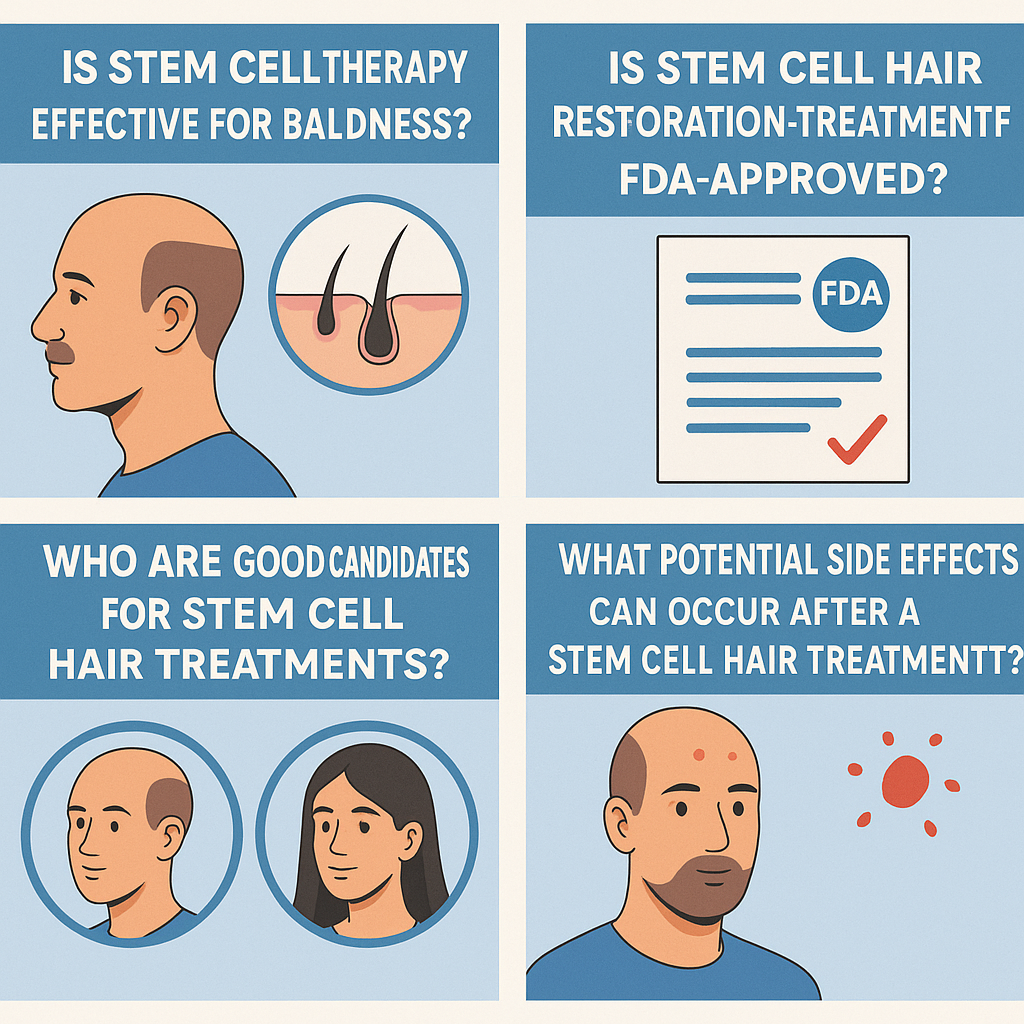
Currently, the FDA has not fully approved stem cell therapy specifically for hair restoration. However, stem cells are approved in other fields, such as orthopedics and wound healing.
In Turkey, the treatment is considered safe when performed in accredited clinics with medical supervision. Patients are advised to choose reputable clinics in Istanbul or Antalya, where procedures follow international standards.
Who Are Good Candidates for Stem Cell Hair Treatments?
Ideal candidates include:
- Men and women with thinning hair.
- Patients undergoing or planning a FUE/DHI transplant.
- Individuals with early-stage androgenetic alopecia.
- People seeking improved density without full transplantation.
Not recommended for:
- Patients with complete baldness and no donor capacity.
- Individuals with severe autoimmune conditions affecting follicles.
How Long Before Stem Cell Hair Treatment Shows Results?
Results vary, but typically:
- First 2–3 Months: Reduced shedding and healthier scalp condition.
- 3–6 Months: Noticeable thickening and stronger regrowth.
- 9–12 Months: Significant density and volume improvements.
Patience is key, as hair growth cycles take time to show visible results.
Are the Results of Stem Cell Hair Treatments Permanent?
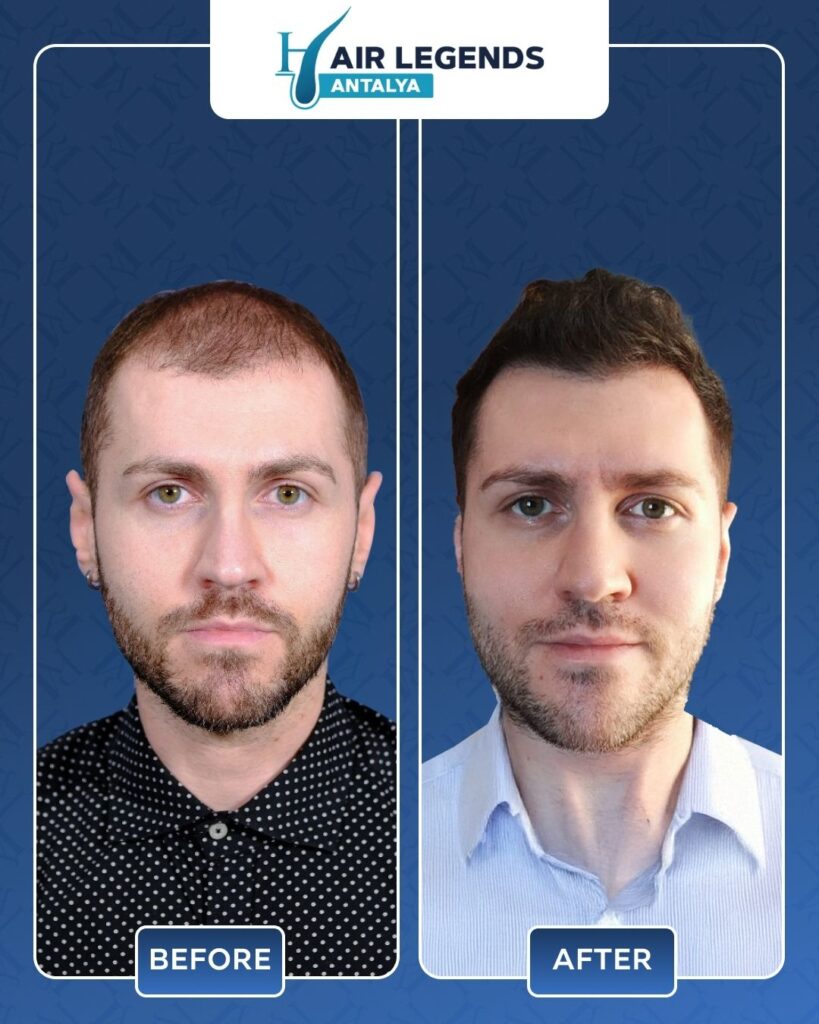
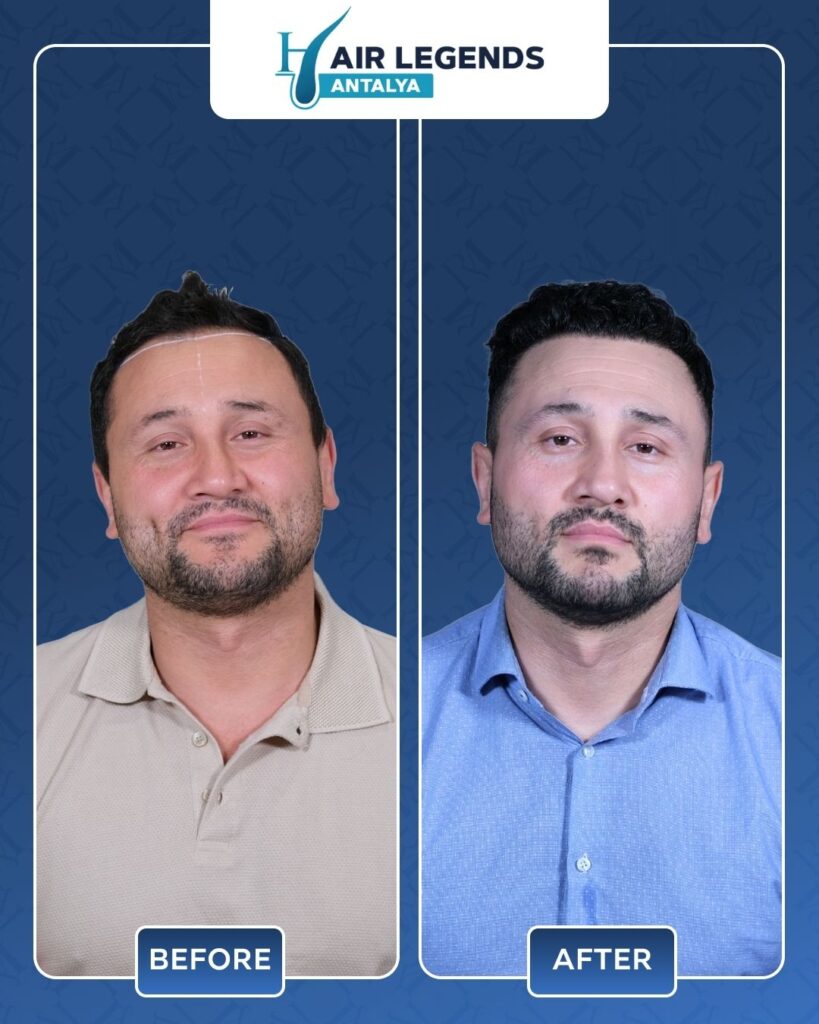
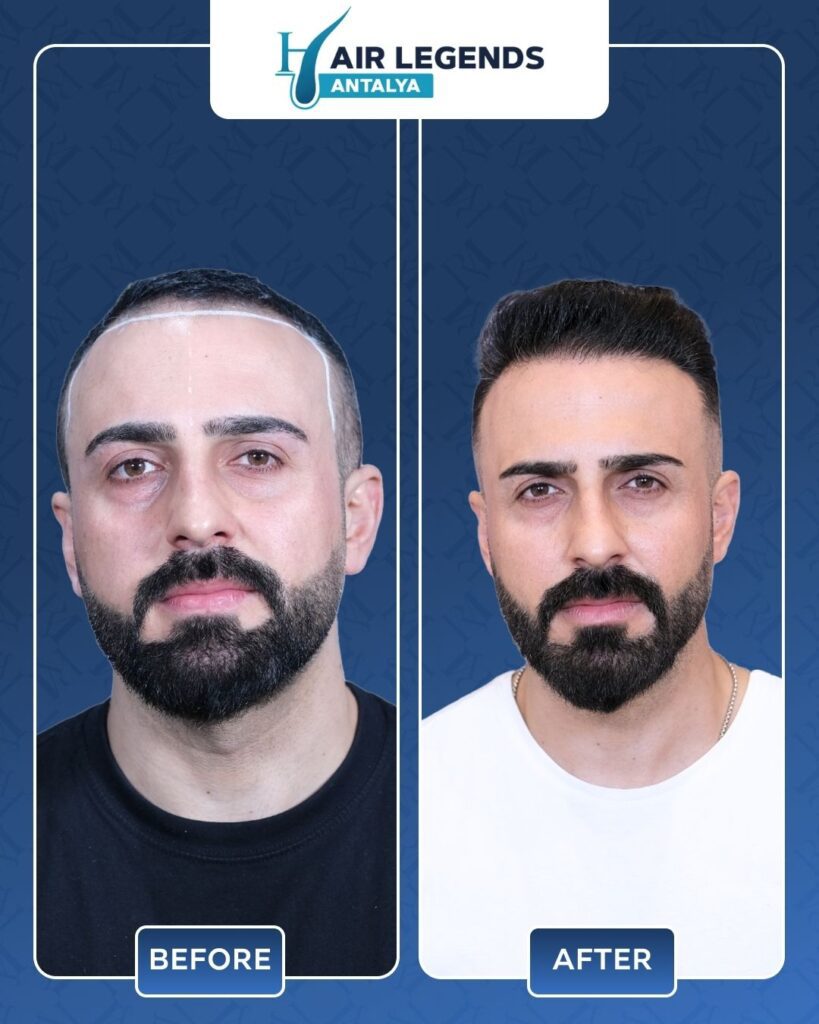
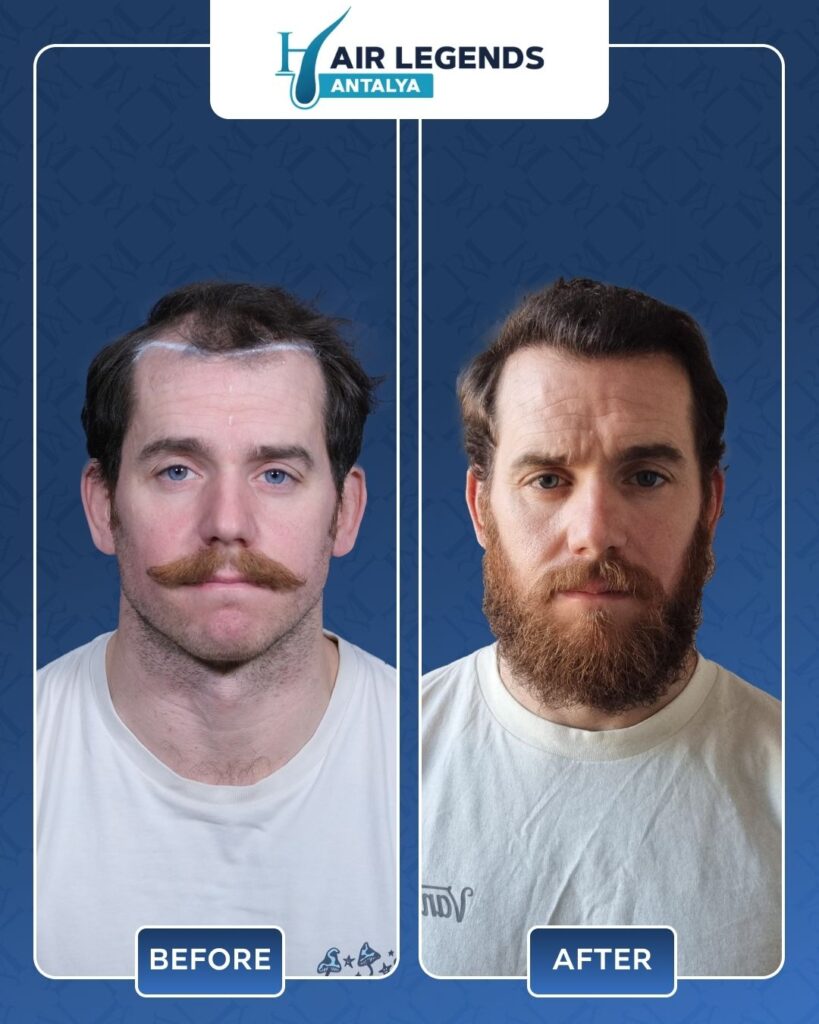
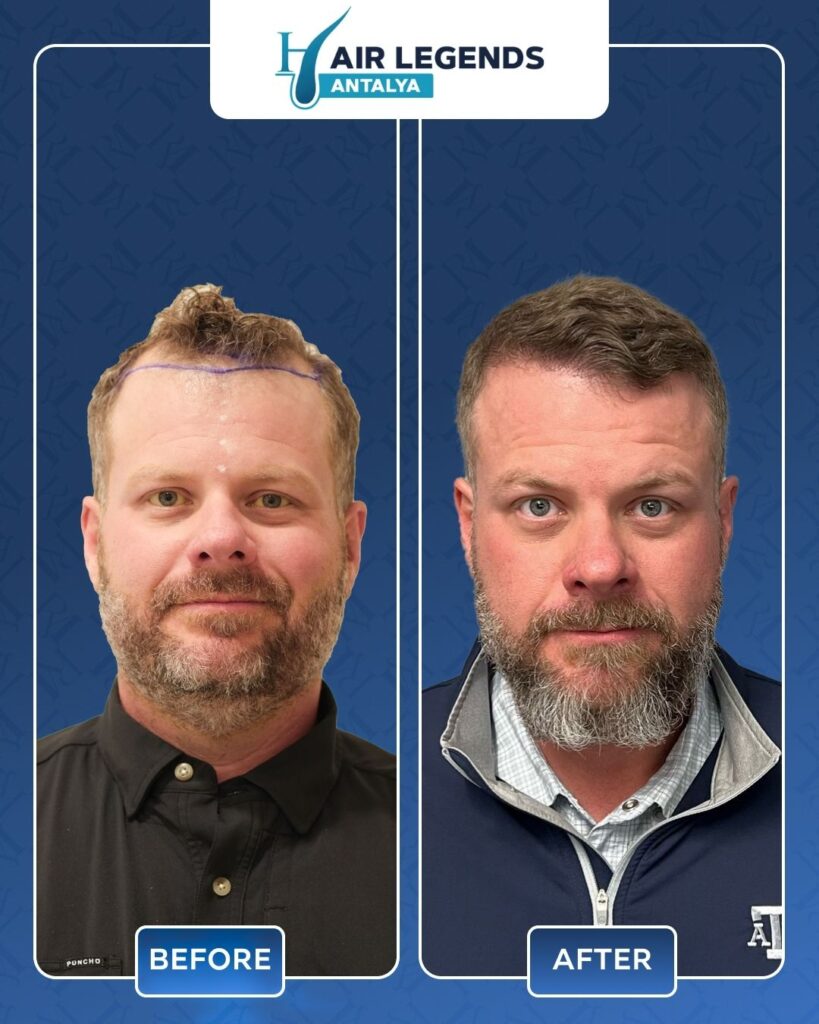
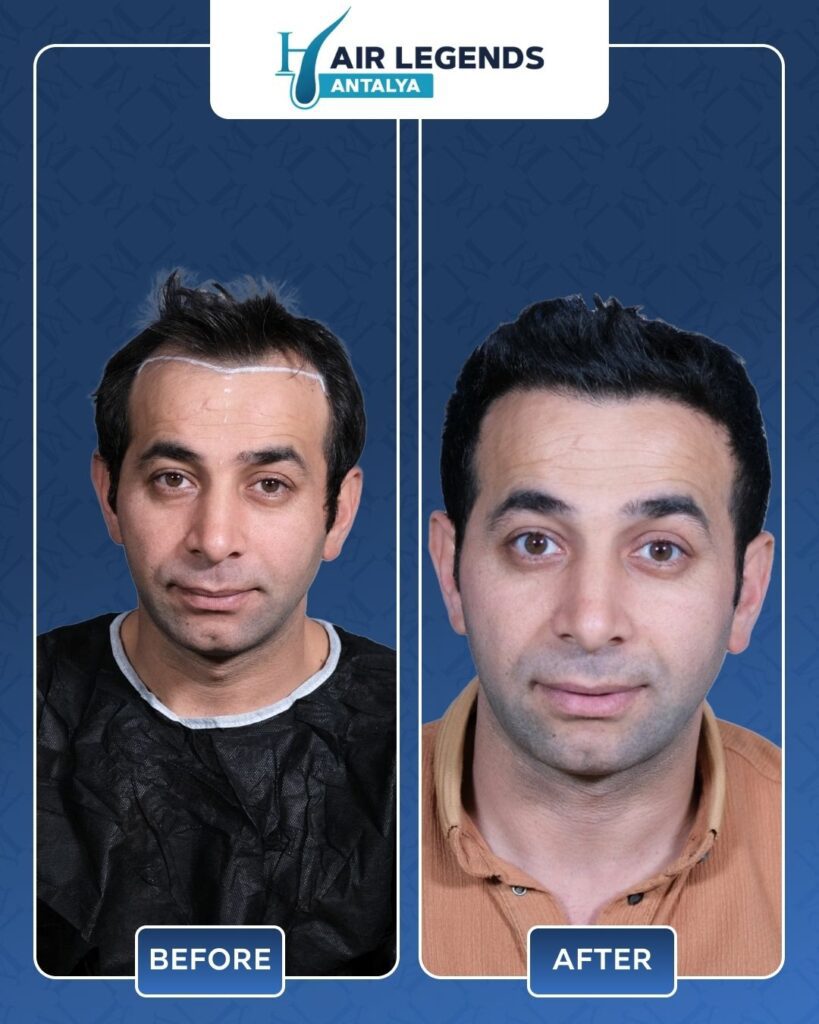
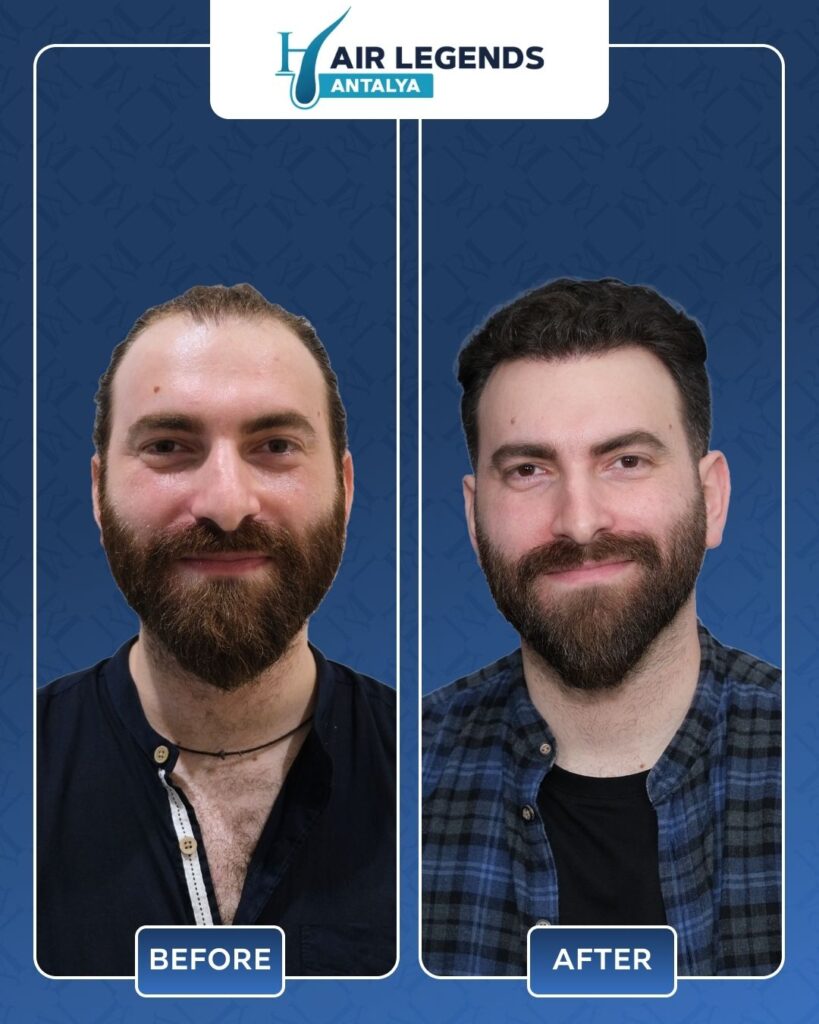
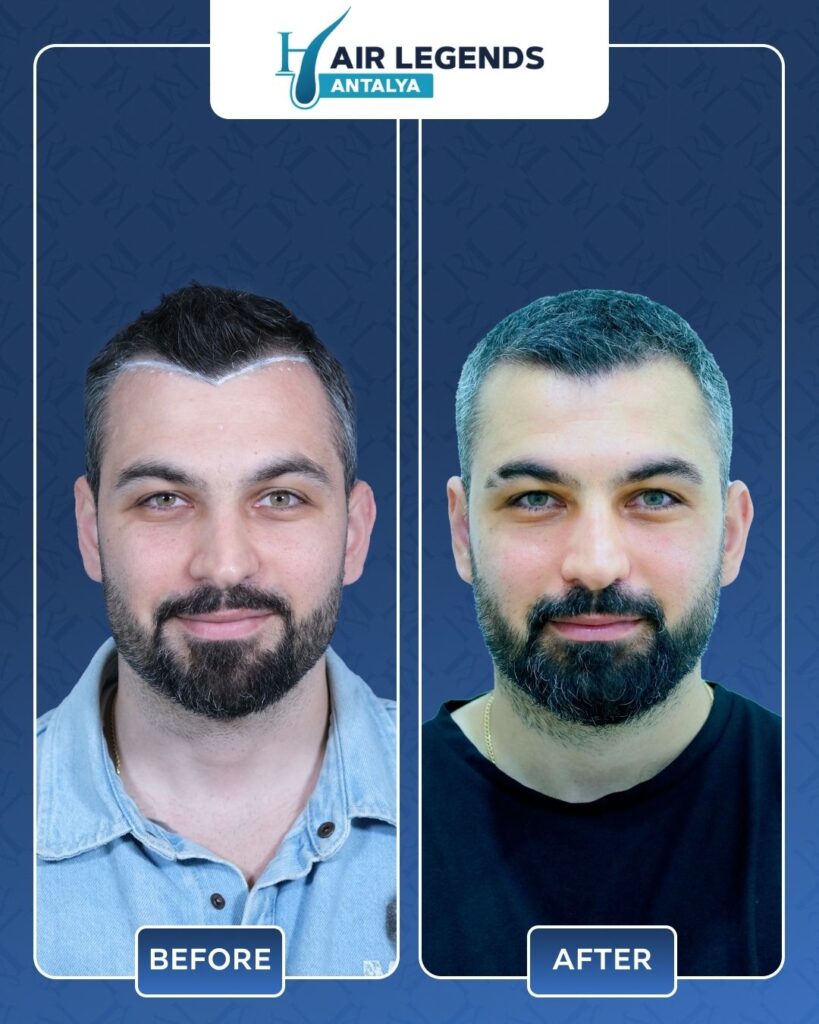
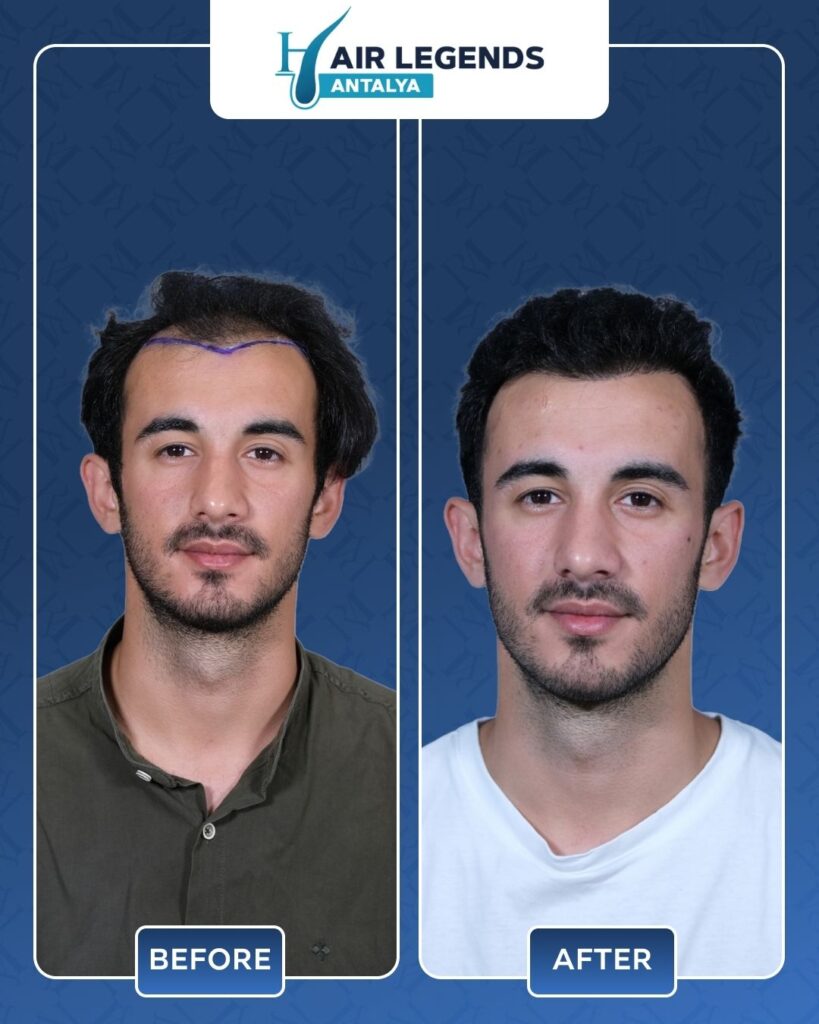
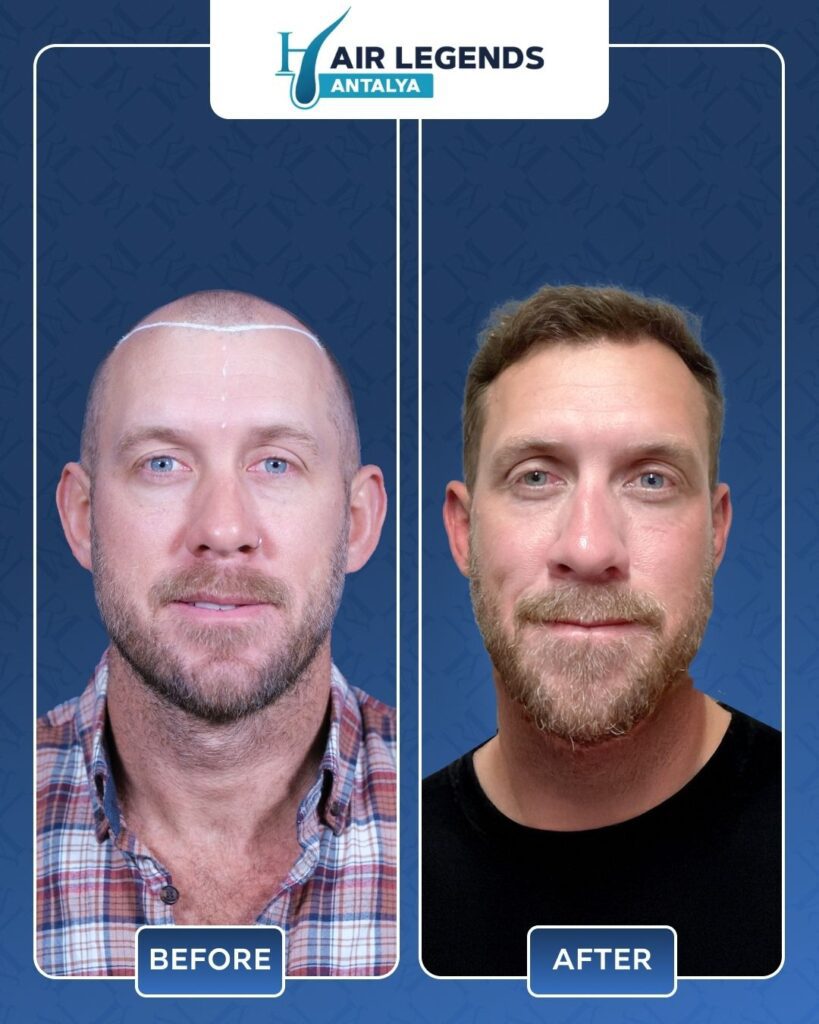
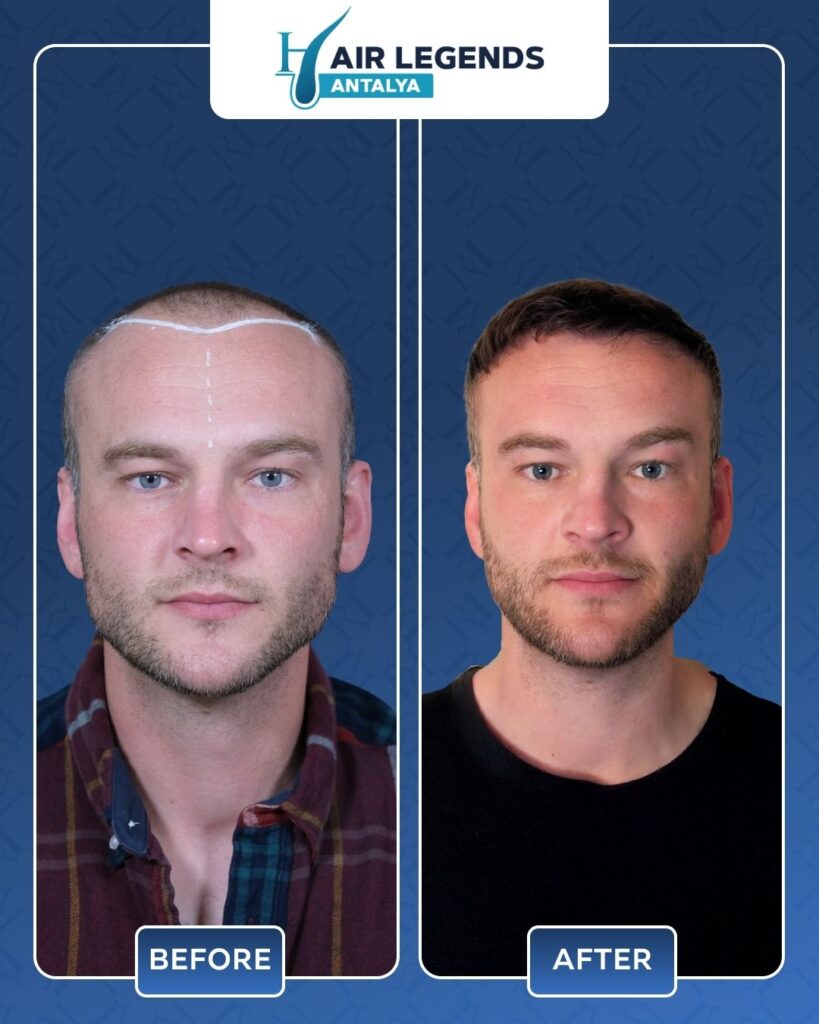
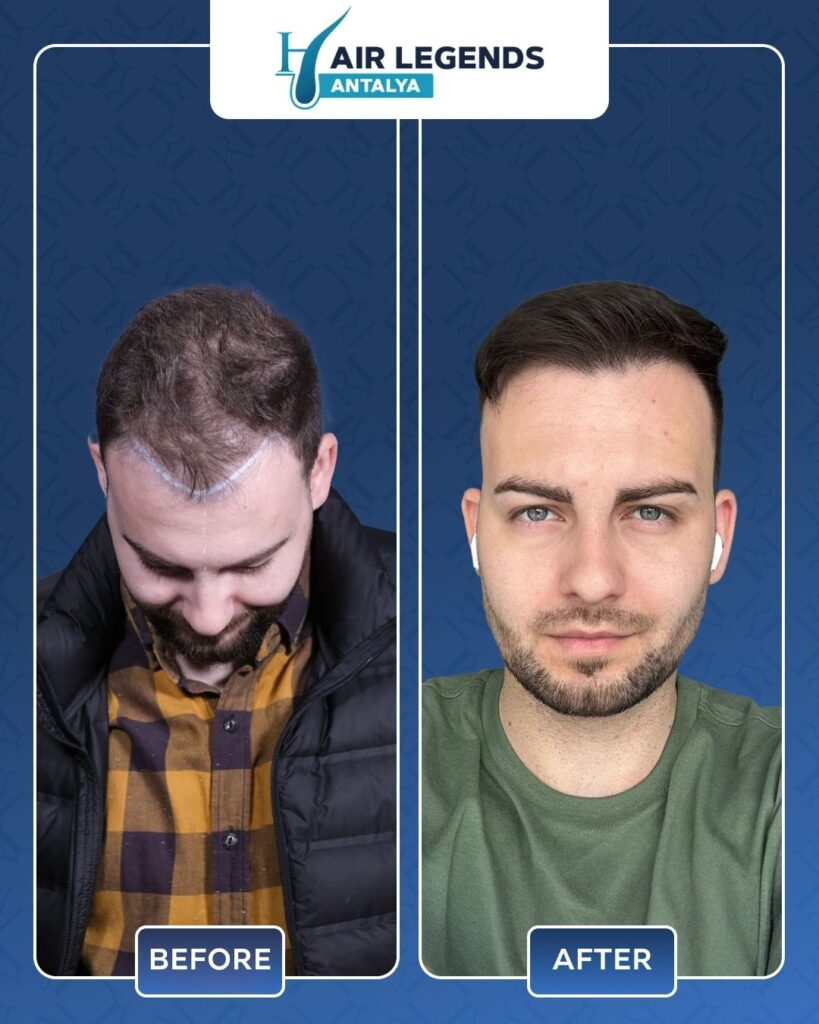
Stem cell therapy significantly extends the life of existing and transplanted hair. While it slows the progression of baldness, results may not be 100% permanent for everyone due to genetic factors.
However, when combined with hair transplant surgery, the overall results are long-lasting and often considered semi-permanent to permanent.
How Many Sessions Are Needed for Stem Cell Hair Therapy?
Most patients require 1–3 sessions depending on their level of hair loss. Some clinics in Turkey offer packages that combine a single transplant session with one or two stem cell follow-ups to maximize outcomes.
How Is the Procedure for Stem Cell Hair Treatments?
The stem cell hair treatment procedure is designed to be minimally invasive while delivering maximum regenerative benefits. The general process in Turkish clinics, particularly in Istanbul and Antalya, follows a highly standardized protocol:
- Consultation and Assessment
- The journey begins with a consultation where the surgeon analyzes scalp health, hair density, donor capacity, and the patient’s overall suitability for stem cell therapy.
- Blood tests and scalp imaging may be performed to rule out underlying conditions.
- Harvesting Stem Cells
- The most common source in Turkey is adipose (fat) tissue, collected through a micro-liposuction procedure performed under local anesthesia.
- Alternatively, bone marrow aspiration can be used in select cases.
- Processing the Sample
- The harvested tissue is processed in a sterile environment using a centrifuge or specialized filtration system.
- This isolates and concentrates mesenchymal stem cells, growth factors, and exosomes.
- Injection Into the Scalp
- The concentrated stem cells are injected into areas of thinning or transplanted regions.
- Surgeons often use micro-needling devices to enhance absorption and create micro-channels for deeper penetration.
- Combination With Hair Transplant
- In many Turkish clinics, stem cells are applied directly to grafts before implantation during FUE or DHI surgery.
- This strengthens follicle survival and improves long-term density.
The entire session takes 2–3 hours, depending on whether it is performed as a standalone treatment or combined with a transplant.
Can Stem Cell Hair Treatment Be Combined with PRP?
Yes — and in fact, this is one of the most popular and effective approaches in Turkey.
Platelet-Rich Plasma (PRP) is derived from the patient’s blood. It contains high concentrations of growth factors that promote healing and follicle stimulation. When combined with stem cells, the two treatments work synergistically:
- Stem Cells: Provide regenerative potential, encourage new cell formation, and repair damaged follicles.
- PRP: Accelerates healing, improves scalp circulation, and stimulates follicle activity.
By combining PRP with stem cell therapy, Turkish clinics report:
- Increased graft survival by up to 20%.
- Faster recovery with less inflammation.
- Enhanced long-term density and natural shine.
This combination is particularly popular in Istanbul, where many premium clinics automatically include PRP as part of their stem cell hair packages.
What Potential Side Effects Can Occur After a Stem Cell Hair Treatment?
While stem cell therapy is generally safe, as it uses the patient’s own cells, some mild and temporary side effects may occur:
- Scalp Redness and Swelling: Usually resolves within 24–48 hours.
- Mild Pain or Discomfort: Can be managed with over-the-counter medication.
- Bruising at Harvest Site: Especially if adipose tissue was extracted.
- Temporary Shedding: Known as “shock loss,” where weak hairs fall before regrowth begins.
- Itching or Tingling Sensations: Due to healing and follicle stimulation.
Serious complications are extremely rare when the procedure is performed by trained professionals in certified clinics. Patients are advised to avoid unregulated providers and instead choose established clinics in Turkey with strong reputations.
What Is the Average Cost of a Stem Cell Hair Treatment?
The cost of stem cell hair therapy varies globally. In the United States or Western Europe, standalone sessions may cost between $8,000–$12,000. In comparison, Turkey offers far more affordable options, without compromising quality.
- Stem Cell Therapy Alone in Turkey: €500–€700 per session.
- Hair Transplant With Stem Cell Enhancement: €1,900–€2,800 all-inclusive
- Packages in Istanbul and Antalya: Typically include hotel accommodation, transfers, medications, PRP, and aftercare.
This pricing advantage is one of the strongest reasons international patients flock to Turkey for stem cell hair treatments.
Is It Better to Get Stem Cell Hair Treatments in Turkey?
Yes and here’s why:
- World-Class Expertise: Turkish surgeons perform thousands of cases annually, gaining unmatched experience in advanced therapies like stem cell–assisted hair restoration.
- Cutting-Edge Technology: Clinics in Istanbul and Antalya use FDA-cleared centrifuge systems, implanter pens, and medical-grade stem cell processing units.
- Comprehensive Medical Tourism Packages: Patients benefit from luxury hotel stays, interpreters, and full aftercare services.
- Affordability: Turkey provides treatments at a fraction of Western prices.
- Cultural and Touristic Value: Patients combine medical journeys with sightseeing in cities like Istanbul (Hagia Sophia, Bosphorus) or Antalya (Mediterranean beaches, resorts).
These factors position Turkey as the global leader in stem cell hair transplants, drawing patients from the UK, Germany, France, Italy, the U.S., and the Middle East.
How to Do Proper Aftercare for Stem Cell Hair Treatments
Proper aftercare is critical to ensure successful results:
- First 24–48 Hours: Avoid washing the scalp. Patients should rest and keep the head elevated when sleeping.
- Day 3 Onwards: Gentle washing with clinic-provided shampoo and lotion.
- Avoid Strain: No heavy exercise, swimming, or sauna for at least 2 weeks.
- Nutrition: A protein-rich diet, vitamins (biotin, zinc), and hydration support recovery.
- No Alcohol or Smoking: Both restrict blood flow and slow down healing.
- Follow-Up Visits: Turkish clinics typically schedule follow-ups at 1 week, 1 month, and 6 months post-treatment.
Following these guidelines maximizes follicle survival and accelerates visible regrowth.
What Are the Do’s and Don’ts After a Stem Cell Hair Treatment?
Do’s:
- Use prescribed shampoos and sprays.
- Wear a hat when going out in the sun.
- Take supplements recommended by your doctor.
- Stay hydrated and maintain good scalp hygiene.
Don’ts:
- Do not scratch or rub the scalp.
- Avoid chemical hair products like dyes for at least a month.
- Refrain from smoking, which restricts blood supply.
- Do not expose the scalp to direct heat (sauna, steam, tanning beds).
Adhering to these rules ensures optimal results and reduces the risk of complications.
Challenges of Stem Cell Hair Treatments
Although promising, stem cell therapy also comes with challenges:
- Regulatory Limitations: Full FDA approval is still pending.
- Cost: More expensive than standard PRP or FUE alone.
- Variable Response: Results may vary depending on genetics and the stage of hair loss.
- Need for Multiple Sessions: Some patients require more than one session for visible results.
Nevertheless, Turkey’s clinics continue to refine these treatments, making them more effective and accessible each year.
Turkey: The Global Pioneer in Stem Cell Hair Restoration
Turkey’s leadership in the global hair restoration industry is undeniable. Istanbul remains the epicenter of innovation, while Antalya offers a luxury, resort-style recovery experience. Together, these cities make Turkey the ultimate destination for patients seeking advanced regenerative treatments.
Istanbul Advantages
- Most experienced surgeons.
- Wide range of advanced technologies.
- Easy access with direct international flights.
Antalya Advantages
- Ideal for patients who prefer a relaxed, private recovery.
- Clinics like Hair Legends Antalya provide boutique-level services with stem cell–assisted transplants.
- The Mediterranean climate and luxury resorts help patients recover in comfort.
Final Thoughts: Why Stem Cell Hair Transplant Turkey Is the Future
Stem cell therapy is not just a trend it represents the future of hair restoration. By combining regenerative medicine with traditional transplant methods, Turkey has revolutionized the industry. Patients no longer settle for basic graft placement; they now demand enhanced survival rates, natural results, and long-term density.
Whether you choose the bustling expertise of Istanbul or the serene beauty of Antalya, Turkey ensures a world-class experience. From consultation to aftercare, every detail is carefully designed to deliver results that restore not just your hair, but also your confidence, self-image, and quality of life.
